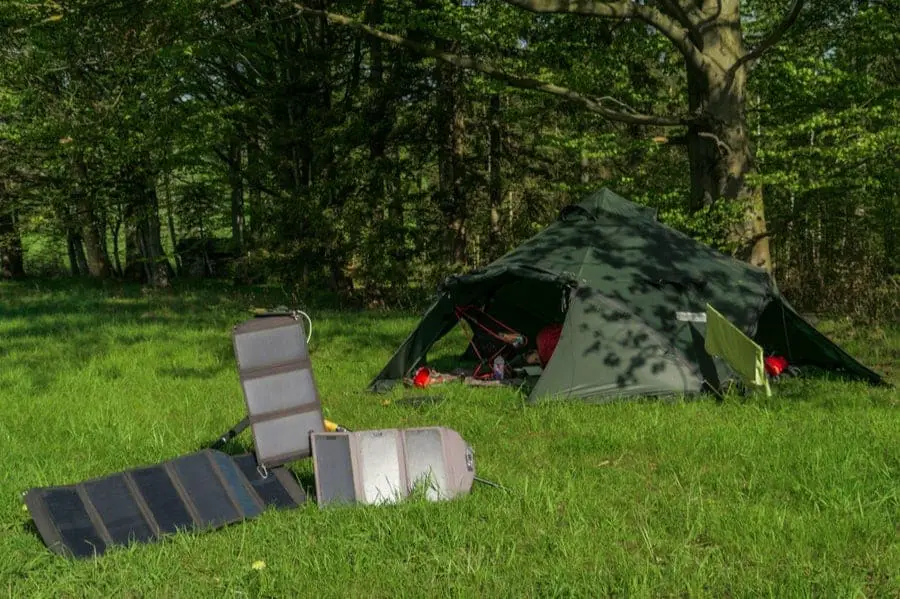
Keep all your devices fully charged on your next outdoor adventure with the best portable power for camping.
Your options include portable power stations, traditional generators, power inverters for your car, lightweight backpacking solar chargers, RV solar panel kits, and so much more.
Whether you’re looking to simply keep your phone charged, run a CPAP machine all night, or power a camping refrigerator around the clock, our ultimate buyer’s guide will help point you in the right direction.
Here are the best portable power devices to keep your electronics running while camping in 2020 and beyond!
Table of Contents
Best Portable Power for Camping Reviews
Not all portable power devices are created equal. So, we’ve done the legwork for you, reviewing dozens of the top options, including solar panels, solar chargers, power stations, portable batteries, and more. Camping Foods That Require No Refrigeration
Here are 9 of the best portable power devices for camping and backpacking in 2020:
1. Goal Zero Nomad 7 Plus Solar Charger

Goal Zero Nomad 7 Plus Solar Panel
$99.95 out of stockBuy Now![]() Rei.comas of November 4, 2020 5:32 am
Rei.comas of November 4, 2020 5:32 am
The Goal Zero Nomad 7 Plus is one of the best solar chargers for backpacking.

At just 12.8 ounces total (or just 8 ounces without the included kickstand), it’s one of the lightest backpacking solar panels available today.
Despite its ultra small size, it boasts 7 watts solar cell output capacity – enough to charge most of your small electronic devices, like smartphones, GPS units, and rechargeable headlamps. Plug your USB devices directly into the solar panel to charge.
The robust construction ensures durability while backpacking. This portable solar charger will stand up to all the abuse you throw at it. It boasts a weatherproof layering to stand up well to rain and snow.
Additional highlights include a built-in kickstand for optimal solar angle placement (it’s detachable to save extra weight), a vented pocket to regulate temperature, a nifty auto restart that tracks power flow history for better smartphone charging, and an LED solar intensity indicator that lets you know the solar charging potential of current weather conditions.
The only real downside is the lack of an internal battery for power storage. This means you can only use the Nomad 7 Plus to charge devices during the daytime. An easy workaround is to pair it with a power bank like the Goal Zero Flip 12 to store a charge to power/charge all your devices at night.
What We Like:
- Lightweight
- Weatherproof
- Quality Components
- Auto Restart Feature
- Built-In Kickstand
What We Don’t Like:
- No Internal Battery
- One USB Charging Outlet
Best Application:
The Goal Zero Nomad 7 Plus is the ideal solar charger for backpacking, bike camping, and anything else where weight/space is at a premium. Goal Zero offers a wide range of other lightweight solar chargers, including the Goal Zero Nomad 5, Goal Zero Nomad 14 Plus, Goal Zero Nomad 50, and many others if you need a more powerful charger (or an even lighter device).
2. Nekteck 21W Solar Charger
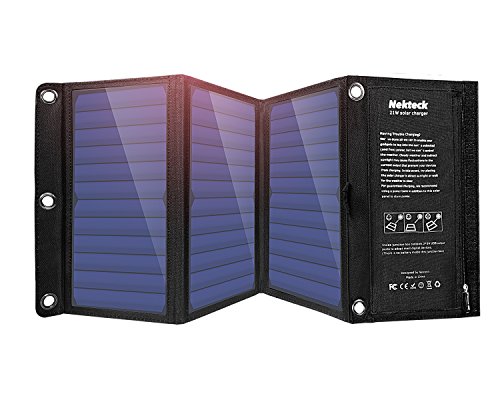
Nekteck 21W Portable Solar Panel
$49.99 in stock1 new from $49.99
4 used from $45.01
Free shippingBuy Now Amazon.comas of November 9, 2020 12:34 am
Amazon.comas of November 9, 2020 12:34 am
The Nekteck 21 is a robust solar charger for those on a budget.
It boasts 21 watts solar cell output capacity for a fraction of the cost of many competitors. Better yet, the device clocks in at just 17.3 ounces total, making it ideal for backpacking and other activities where space is at a premium.
The Nekteck 21 has two fast-charging USB ports so you can charge two devices at once. Built-in smart technology enables the solar charger to detect which type of devices you’re charging to best maximize charging speed.
Another highlight of this backpacking solar panel is its overall durability. High-quality materials are used to prevent damage in the field. A canvas outer layer protects the device from bumps and bruises. It’s also water resistant.
This solar charger’s only real flaw is its lack of an internal battery. However, it is compatible with most battery packs and portable power stations, including the Nekteck 20000mAh Power Bank.
What We Like:
- Affordable
- Dual USB Charging Ports
- Charge Multiple Devices at Once
- Durable, Waterproof Construction
- Fast-Charging Technology
What We Don’t Like:

- No Internal Battery
- Heavier Than Competitors
Best Application:
The Nekteck 21W Solar Charger is ideal for budget backpackers that don’t mind adding a few extra ounces for a whole lot of savings.
3. Goal Zero Boulder 50 Solar Panel

Goal Zero Boulder 50 Solar Panel
$149.95 in stockBuy Now![]() Rei.comas of November 4, 2020 5:32 am
Rei.comas of November 4, 2020 5:32 am
The Goal Zero Boulder 50 is a robust solar panel ideal for boondocking and dispersed camping.

It clocks in at 12 pounds 6.4 ounces and measures 26.75 inches by 21.75 inches by 1.75 inches so it’s not a good option for backpacking, bike camping, or other activities where shaving off weight is important.
That said, the 50 watts solar cell output capacity and 18 to 20 volts output enables this camping solar panel to capture enough off-grid power to fully charge your smartphone, tablet, laptop, and other electronic devices. The caveat? You can’t charge devices directly off the Boulder 50 like you can with solar chargers. So, you’ll need a portable power pack (like the Goal Zero Sherpa 100) or portable power station (like the Goal Zero Yeti 150) to use it.
This Goal Zero solar panel is also notable for its rugged construction. It utilizes an aluminum frame with reinforced corners to prevent damages while in the field. The panels themselves are protected with tempered glass. The entire unit is weather resistant for use year round.
An integrated kickstand enables you to achieve the ideal solar charging angle as the sun moves across the sky. You can pair the Boulder 50 with another Goal Zero solar panel to further increase off-grid charging power. You can even mount it to the roof of a vehicle like an RV, camper van, or trailer (Goal Zero Mounting Hardware sold separately).
What We Like:
- 50 Watt Output
- Durable Construction
- Built-In Kickstand for Best Charging Angle
- Can Link Multiple Panels Together
- Easy to Use
What We Don’t Like:
- Too Heavy for Hiking/Backpacking
- Not Powerful Enough for Larger Power Stations

Best Application:
The Goal Zero Boulder 50 works best as part of a basecamp power station with a compatible portable power station. It fully charges the Yeti 150 in 6 to 12 hours. It’s much too large to use as a backpacking solar panel. The Boulder 50 is also a good option for a van or RV solar panel.
4. Suaoki S270 Power Station
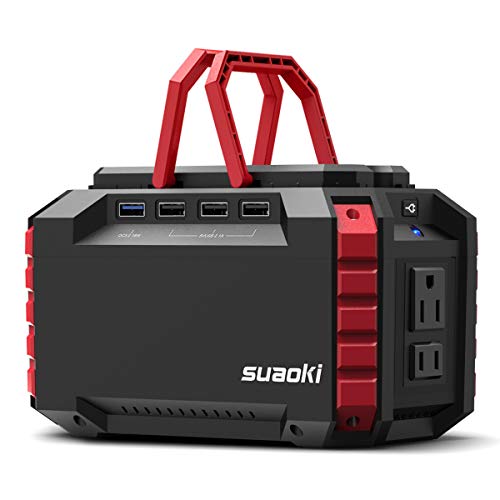
SUAOKI Portable Power Station
$125.99 in stock1 new from $125.99
Free shippingBuy Now Amazon.comas of November 9, 2020 12:34 am
Amazon.comas of November 9, 2020 12:34 am

The Suaoki S270 comes out near the top of our list for the best portable power stations for camping in 2020.
Unlike solar chargers and solar chargers, a portable power station is actually designed to hold its own charge. That said, it cannot generate its own power supply so you must regularly recharge the power station with a wall outlet, 12V car outlet, or with a compatible solar charger/panel.
Highlights of the Suaoki S270 include its lightweight and compact design. It weighs just 2.9 pounds for easy portability. Two hideable handles make it even easier to move around the campsite. It also boasts a whopping 10 charging ports for all your device charging needs.
As far as its power output goes, this portable power station boasts 150 watt hours. It’s capable of powering all devices under 100 watts. According to Suaoki, the device can charge an iPhone X 11 times on a single charge.
We love that the Suaoki S270 is so lightweight and portable. It’s also a very affordable camping portable power option for those on a budget. With that in mind, know that it’s far from the highest-capacity portable power station on the market. Depending on what devices you want to charge (and whether you plan to recharge with a solar panel in the field), you might be better off with a more robust unit with a higher battery capacity and greater max output.
What We Like:
- Affordable
- Compact Size
- Weights Just 2.9 Pounds
- Foldable (Hideable) Handles
- 10 Charging Ports
What We Don’t Like:
- Slow to Charge from Solar
- Not Enough Capacity for Running Appliances
Best Application:
The Suaoki S270 Portable Power Station is a great choice for recharging small devices, including smartphones and computers, while camping. It’s also a good addition to any home emergency kit. The affordable price makes it an excellent option for beginning campers and those on a budget.
5. Jackery Explorer 500 Power Station
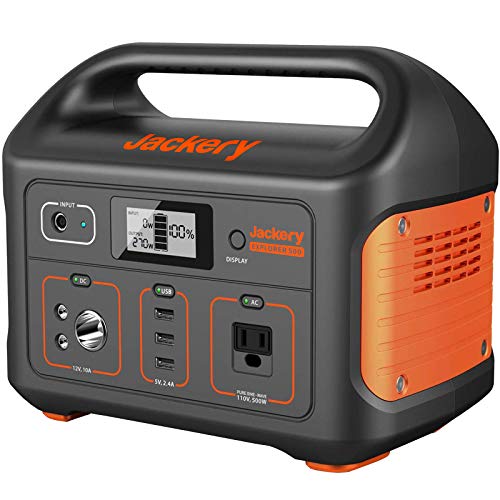
Jackery Portable Power Station Explorer 500
$599.99
$499.99 in stock1 new from $499.99Buy Now Amazon.comas of November 9, 2020 12:34 am
Amazon.comas of November 9, 2020 12:34 am
The Jackery Explorer 500 is a mid-capacity offering from this portable power supply manufacturer.
Designed specifically with camping, off-grid, and emergency use in mind, the Explorer 500 is a highly reliable backup power source. Its lithium ion battery provides 518 watt hour battery capacity, 500 watts rated power, and 1,000 watts surge power. It has multiple outlet ports, including three USB ports, an AC outlet, and 12V car outlet.
Like most other portable power stations for camping, you can recharge the Jackery Explorer 500 via AC wall outlet, DC car outlet, or a solar panel. We providing pairing this power station with a Jackery solar panel (like the Jackery SolarSaga 100) for easy charging at the campsite.
Despite its high capacity battery and powerful charging output, this camping power station weighs just 13.32 pounds. Other notable features include the foldable carry handle and an easy-to-read LCD screen with charge display and battery life status.
The Jackery Explorer 500 is capable of charging all of your small devices like smartphones, tablets, computers, and GPS units as well as safely and efficiently powering a CPAP machine overnight. In fact, this is one of the best portable power stations for CPAP in its price range.
What We Like:
- Lightweight
- Durable Construction
- 518 Watt Hour Battery
- Multiple Output Ports/Outlets
- Versatile Charging
What We Don’t Like:
- Expensive
- Not waterproof
Best Application:
The Jackery Explorer 500 Portable Power Station is an all-around good choice for camping. It’s ideal for charging all of your devices as well as powering small devices and appliances like CPAP machines, televisions, mini fridges, and USB fans. Jackery also offers a 240 watt power station (the Explorer 240) and a 1,000 watt power station (the Explorer 1000).
6. Goal Zero Yeti 150 Power Station

Goal Zero Yeti 150 Portable Power Generator
$199.95 in stockBuy Now
The Goal Zero Yeti 150 is a top-notch portable power station for those that primarily want to charge their devices.
One of Goal Zero’s many portable solar generator, the Yeti 150 clocks in at the smallest side of the scale with the smallest battery capacity. However, this makes it the lightest and most compact power station that Goal Zero currently offers.
This powerhouse of a solar generator packs 168 watt hours of battery capacity. It’s capable of charging an iPhone up to 15 times on a single charge. You can charge the device via a wall outlet, 12V car outlet, or with a Goal Zero solar panel. It takes between 6 to 12 hours to fully charge this power station with the Boulder 50.
Although the Yeti 150 is quite durable and robust, it’s not weatherproof. This means you want to keep it somewhere dry at all times. Luckily, all compatible Goal Zero solar panels are weather resistant, so you can keep your power station safely tucked inside your tent or vehicle while charging.
The Yeti 150 is plenty powerful if you plan to recharge laptops, smartphones, and other devices, but it’s not necessarily up to the task of continuously powering CPAP machines or small appliances, especially once you factor in the daily recharging required for such applications.
What We Like:
- Lightweight
- Rugged Design
- Three Recharging Options
- Multiple Output Ports
- Foldable Handle
What We Don’t Like:
- Not Weather Resistant
- Not Powerful Enough for Many Applications
Best Application:
The Goal Zero Yeti 150 Portable Power Station is one of the best small size portable batteries for camping. It’s highly capable of recharging devices, including smartphones and computers, several times on a single charge. Look at a larger Goal Zero power station, like the Yeti Lithium 500 or the Yeti Lithium 1000, if you plan to continuously power devices or appliances rather than simply recharge them.
7. Anker PowerCore II 6700 Power Pack
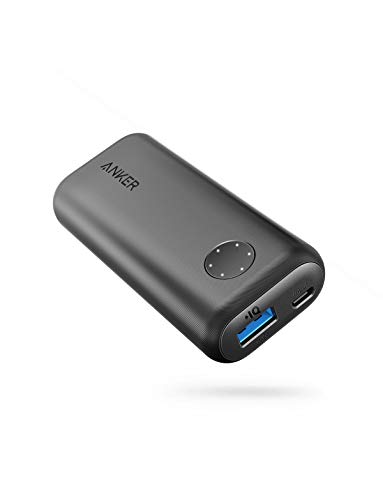
Anker PowerCore II 6700 Portable Charger
out of stockBuy Now Amazon.comas of November 9, 2020 12:34 am
Amazon.comas of November 9, 2020 12:34 am
The Anker PowerCore II+ 6700 is small but it packs a big punch.
The only portable power pack on this list, this ultra-compact portable charger is ideal for camping, hiking, backpacking, and just about any activity where you’d like some extra battery life in a device that slips right into your pocket.
Most notable about the PowerCore II+ 6700 is its fantastic capacity-to-size ratio. Although it clocks in at just 5 ounces and measures only 3.7 inches by 1.8 inches by 1 inch, it’s capable of charging an iPhone between one and three times, depending on the model, on a single charge.
To top it all off, this Anker portable power bank has a sleek, stylish finish. The device looks great. The 6 bright LED lights let you know how much juice is left in the backup battery before it must be recharged.
Anker has several other portable power banks in various size capacities depending on your needs.
What We Like:
- Lightweight
- Very Compact
- Large Battery Capacity
- Great Capacity-to-size Ratio
- Stylish Looking
What We Don’t Like:
- Not Waterproof
- Can’t Charge Larger Devices Like Laptops
Best Application:
The Anker PowerCore II+ 6700 Portable Power Bank is a fantastic option for campers that just want to recharge an iPhone or similar sized device one or two times. It’s also a great daily carry emergency backup – just throw it in your bag before heading out the door and know you always have an extra charge on hand.
8. Snow Lizard SLXtreme Solar Charging Case
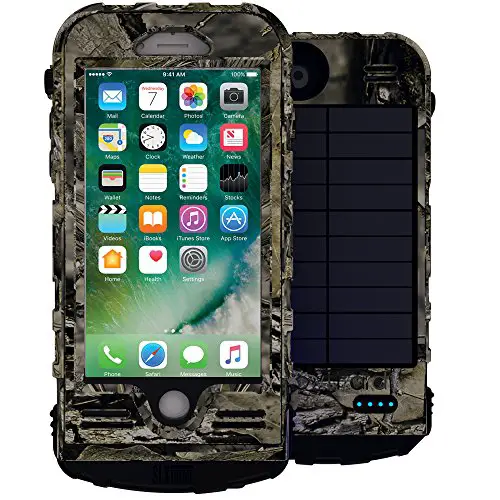
SnowLizard SLXtreme iPhone 7 Case
$69.99 in stock2 new from $69.99
1 used from $38.68
Free shippingBuy Now Amazon.comas of November 9, 2020 12:34 am
Amazon.comas of November 9, 2020 12:34 am

Available to fit a variety of the most popular smartphones, the SnowLizard SLXtreme is a solar-powered smartphone charging case.
Thanks to its slim design, it’s a great choice for hiking or backpacking when space is at a premium. Although somewhat similar to portable power packs in that it stores an extra charge, the notable difference is that the smartphone charging case can actually recharge itself thanks to its built-in solar panel.
The SnowLizard SLXtreme boasts a built-in 3000 mAh battery to store an extra charge for your smartphone. It fits around your phone just like a normal case – except just a tad bit bulkier. The solar panel trickle charges the battery throughout the day (thus helping to power your phone). However, the solar panel is quite small so don’t expect this case to fully recharge your phone battery from 0%. It’s best to charge the case at home (via USB outlet) before you leave. Use the battery pack as a backup power source and the solar panel for emergencies.
The case also helps protect your phone. It’s specifically designed to hold up to the wear and tear of the outdoors thanks to its thick, rugged poly-carbonate construction. It’s waterproof to up to 6 feet deep so you don’t have to worry about it getting wet while camping in the rain.
Because of the bulkiness of this solar charging case, sound quality on calls is poor. It makes it difficult to hear others talking and also muffles your own voice. Luckily, the case is very easy to add and remove from your phone so you’ll have no problem taking it off before making a call.
What We Like:

- 3000 mAh Battery
- Built-In Solar Panel
- Drop Proof Rated 810G 6 Feet
- Waterproof Up to 6 Feet
- Rubber for Better Grip
What We Don’t Like:
- Poor Sound Quality
- Heavy and Bulky Design
Best Application:
The SnowLizard SLXtreme Smartphone Charging Case is best for those that want a durable, protective case for their smartphone that doubles as a portable power pack (with built-in solar panel for trickle charging!).
9. Maxoak Bluetti EB150 Power Station
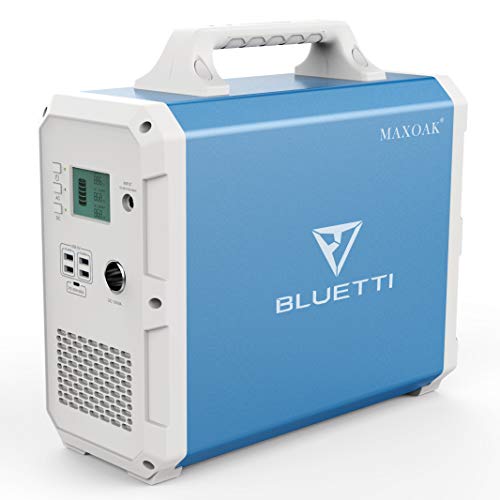
MAXOAK Portable Power Station BLUETTI EB150
$1,299.99 in stock new from $1,299.99Buy Now Amazon.comas of November 9, 2020 12:34 am
Amazon.comas of November 9, 2020 12:34 am

The Maxoak Bluetti EB150 is a strong contender for the best portable power station for camping available in 2020.
It boasts a high-capacity design with 1500 watt hours and 1000 max watts. The high-quality battery is not only safe and reliable, but also long lasting.
Recharge this power station via wall outlet, car outlet, or solar panel. Do know that it takes a while to fully recharge (several days with most solar panels) because of the high capacity. That said, it’s easy to keep it charged enough to power most of your devices despite the long time to fully charge.
The Bluetti EB150 has various charging ports, including several USB ports and two AC outlets. An LED display shows you how much battery life is left. The build quality is excellent and this portable power supply will stand up to all the bangs and bruises of camping.
This Maxoak power station is an excellent choice for long-term camping, vandwelling, and off-grid living, especially when paired with a solar panel setup. It’s fantastic at recharging electronic devices, power a camping refrigerator, running power tools or a hairdryer, powering a CPAP machine at night, and many other tasks.
The only real downside is the cost. At well over $1,000, the Bluetti EB150 will certainly set you back a bit, but it’s well worth every penny if high-capacity portable power storage is what you’re looking for.
What We Like:
- Huge Capacity
- Stylish Design
- Rugged Construction
- Various Charge Ports
- Top-Quality Battery
What We Don’t Like:
- Expensive
- Long Time to Charge
Best Application:
The Maxoak Bluetti EB150 Portable Power Station is an excellent choice for all campers looking for a high-capacity portable power station to charge and power all of their electronics and appliances without missing a beat.
Portable Power Buyer’s Guide
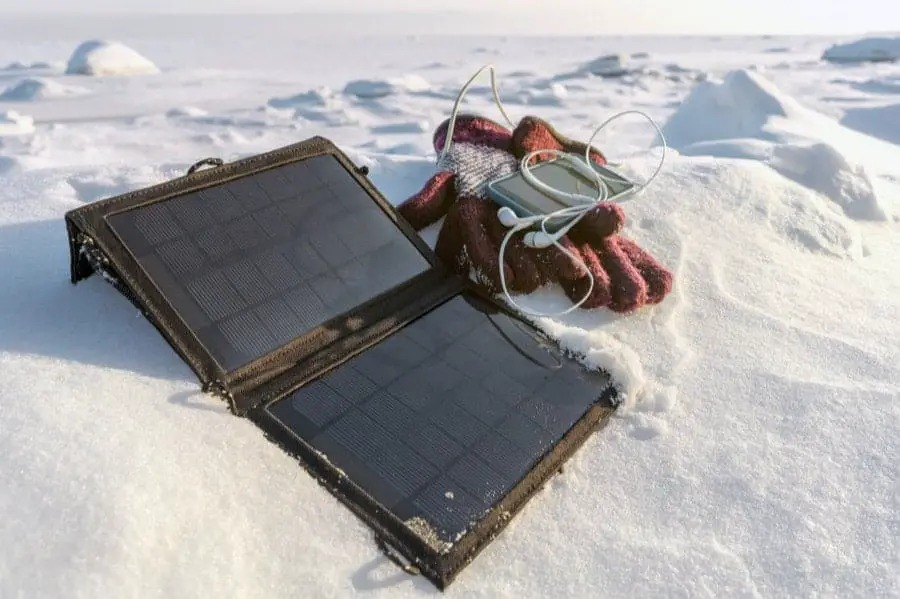
Everyone wants something different from their portable power supply for camping. Think about your individual preferences before making a decision. Learn what to look for in portable power devices to ensure you select a quality product that matches your needs.
Before You Buy
The most important factors to consider before buying portable power for camping include:
- Type of Device – What do you intend to power? Your smartphone, laptop, a television, a refrigerator?
- Power Output – How much power do you need? Most manufacturers measure this in mAh (milliamp hours). About 10,000 mAh translates to 3 complete smartphone charges.
- Type of Camping – Are you backpacking, car camping, or boondocking? Backpacking requires a small, lightweight portable power device outlet while boondocking has few size/weight limits.
- Frequency of Camping – How often do you camp? If you camp on a regular basis, it’s probably worth investing in a more powerful device (even if it costs more upfront).
- Camping Location – Solar power for camping is hot right now. Yet it’s not right for every location. You’re better off with battery power in many locations.
Your answers to these questions dictate, at least partially, what type of portable power bank for camping is right for you.
How to Choose Portable Power For Camping
Now that you have a better idea of what type of portable power device is best for you, it’s essential to be able to weed out the lackluster products from the quality ones.
Here are a few tips that will further help you narrow down your search for the best portable power for camping:
- Number of Users – Will only you be using the power device? Or do you need one capable of powering devices from several users?
- Age of Users – Those with children should select portable power devices that are safe for youngsters to use.
- Power Type – How is the device powered? Popular options include solar power, wind power, gasoline power, and rechargeable electric (at home or with your car’s 12V cigarette lighter).
- Battery Storage – Does the portable power source simply recharge devices or does it store a charge itself? The inclusion of an in-built battery is valuable, especially for solar chargers.
- Capacity – How many charges does the device provide? Power output is usually measured in mAh (milliamp hours), but most manufacturers also list this in more usable terms.
- Size/Weight – How big and heavy is the portable power gadget? Small size and lightweight are of utmost importance for backpacking. Remember that larger devices usually have a higher power output/capacity.
- Durability – Camping takes a serious toll on outdoor gear. Ensure your power source is prepared for hot sun, snow, and rain as well as bumps and bruises.
- Features – How many charging ports does the device have? Are these standard power outlets, USB ports, or something else? Solo campers might be fine with one portable power outlet while family campers should look for a device with multiple charging ports.
- Emergency Backup – Not all portable power devices can jumpstart a car. If that’s something you want, select one with this emergency capability.
Consider all of these factors ahead of time to narrow down the options to the type of portable power for camping that matches your personal needs and preferences.https://de61c4f18db8a1901010399cbf72db9b.safeframe.googlesyndication.com/safeframe/1-0-37/html/container.html
Portable Power for Camping FAQ
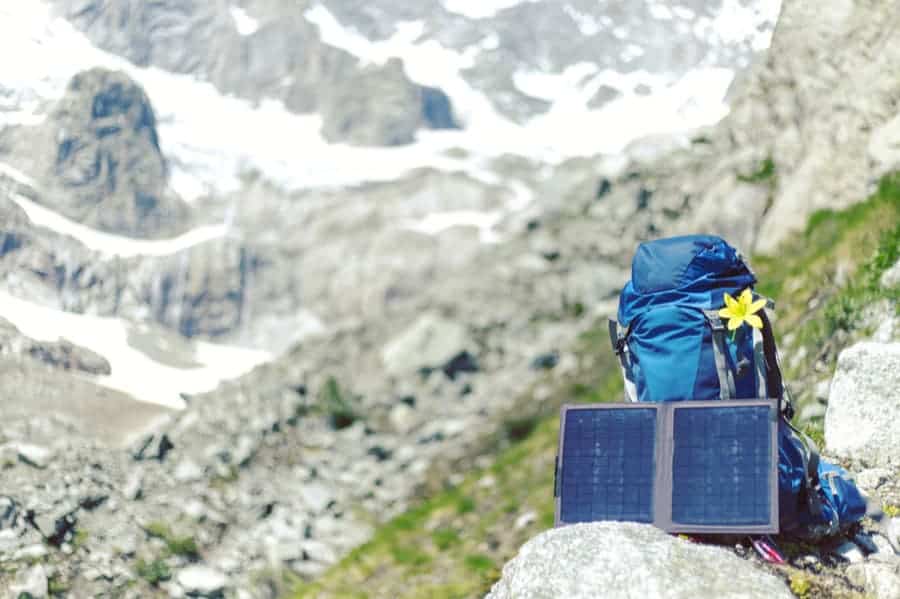
Here are some of the most frequently asked questions (with answers) about portable power for camping.
Q: Will my portable solar panel work in cloudy weather?
A: It’s true that camping solar panels, like all solar panels, work best in bright, sunny weather. That said, they still perform in cloudy conditions, although at a slower rate (roughly 25% of total charging output depending on the model).
Q: How do you charge a portable power station?
A: You can charge your portable power station in a variety of ways. Most of the best models reviewed above can be charged via a wall outlet, 12v car port, or even a portable solar panel.
Q: How much power output do I need from my portable power device for camping?
A: This all depends on your needs. For short trips, you might only need enough power to recharge your smartphone once or twice. For longer excursions, you might prefer a robust portable power station that can keep all your devices and even small appliances charged for days on end. A solar charger is another good option for longer outings (or when weight/space are at a premium). Or, for the ultimate camping power supply, combine a portable power station with a portable solar panel to keep all your devices charged for days or even weeks on end.
Final Thoughts
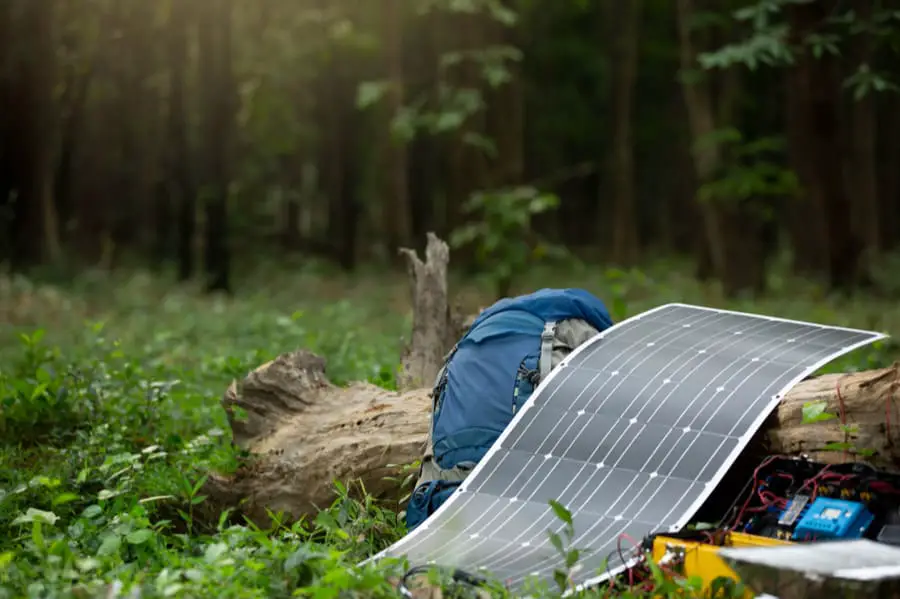
Now you know what it takes to buy the best portable power for camping or backpacking.
Remember that even more important than selecting the best device is selecting the device that best meets your camping needs and preferences, more specifically your weight/space requirements and required power output.

